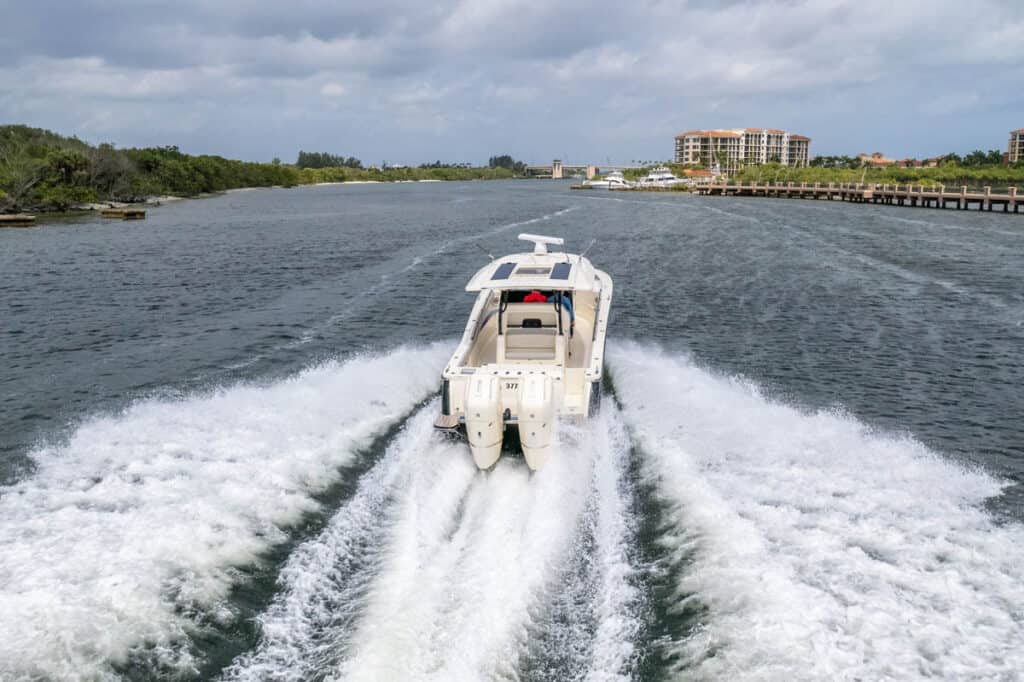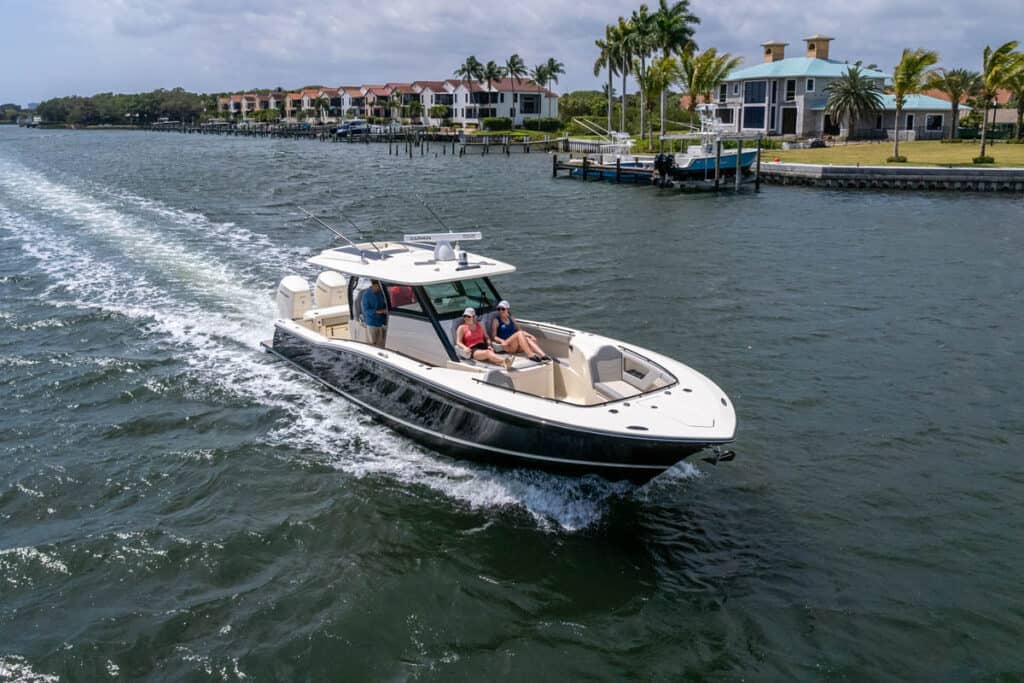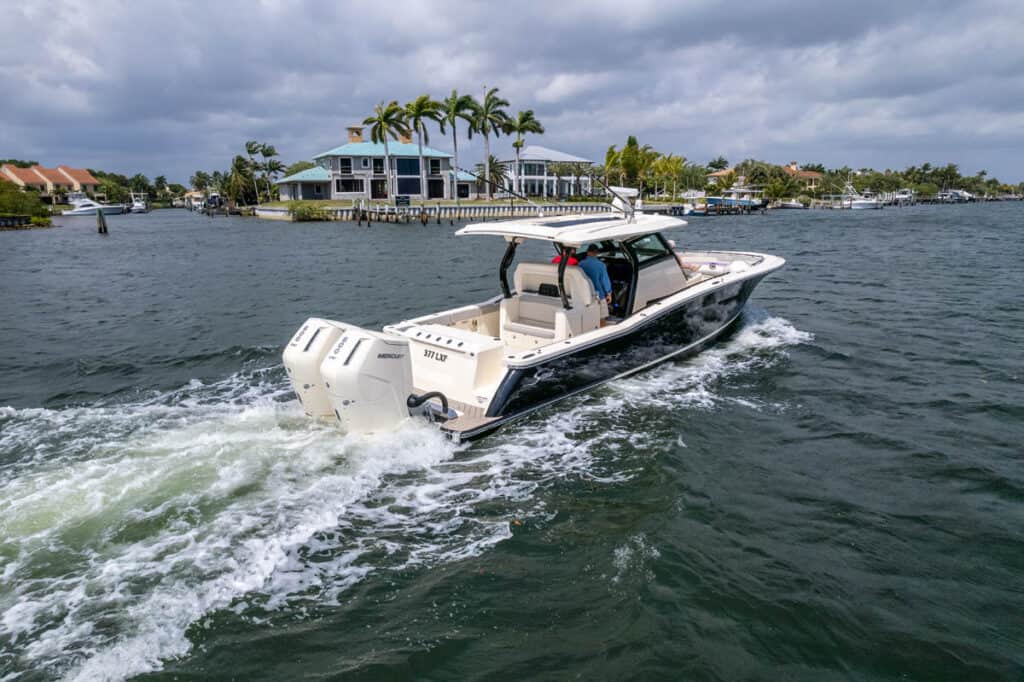
The blue-green sail emerged from the depths behind the teaser rig that bounced about in the boat’s wake. I grabbed the fly rod and gripped it tight, letting my fingernails dig into the cork handle slightly. Looking at the captain, I knew I needed to cast, but we had rehearsed our roles, and I trusted him. The call would come any moment now.
“CAST!” he yelled at me, despite the short distance between us. I hauled the heavy, 14-weight rod into position and began to launch the especially tied rig at the sail as it sank into the water. I knew the next few moments would explode into the fantasy that haunted my dreams for many years.
I felt the fish take my fly, and I lowered the rod and line and set the hook. Immediately the fish dove, and my rod raised into a classic arc, indicating my success. The fight of my life lay before me, fulfilling every daydream I conjured up back home. This is the Billfish on a fly.
All About Billfish
Billfish are predatory fish characterized by their distinctive bills or rostrums, which give them their name. This group includes species such as marlins, sailfish, and swordfish. They are known for their incredible speed and agility, making them formidable hunters in the ocean.
Billfish are highly migratory creatures, often traveling long distances for food or suitable breeding grounds. They have a streamlined body shape and a crescent-shaped tail that allows them to reach impressive speeds, sometimes exceeding 60 miles per hour. Their bills are powerful weapons to slash at prey, stunning or impaling them.
These magnificent creatures are popular targets for sport fishing enthusiasts due to their strength and acrobatic displays when hooked. However, billfish populations have faced significant pressure from commercial fishing, leading to conservation concerns. Efforts are being made to promote sustainable fishing practices and protect their habitats to ensure the long-term survival of these iconic oceanic species.
Where to Find Billfish
Billfish can be found worldwide, primarily in warm and tropical waters. Some popular regions for billfish fishing include the Atlantic Ocean, Pacific Ocean, Indian Ocean, and the Caribbean Sea.
In the Atlantic Ocean, areas such as the Gulf of Mexico, the waters off the coast of Florida, and the Caribbean islands are known for their billfish populations. The Pacific Ocean offers abundant billfish opportunities along the coasts of Central and South America, including Costa Rica, Panama, and Mexico.
The Indian Ocean boasts excellent billfish grounds, particularly around the Maldives, Seychelles, and Mauritius. Additionally, billfish can be found in the waters off the eastern coast of Africa, including Kenya and Mozambique.
It’s important to note that billfish migratory patterns can vary throughout the year, so consulting local fishing guides or experts, as well as keeping an eye on seasonal trends, can help determine the best times and locations to find these remarkable fish.
Packing the Tacklebox

Like any fish, billfish requires a certain tackle setup essential to success. While other fish can be forgiving, billfish are not. With the amount of pressure and strain on the line and the fisherman, any error in tackle selection will result in a fish lost to the depths forever.
Rods—You can get away with a rod as small as a 12 weight for billfish, but if there is any chance you will accidentally hook larger billfish or even small marlin, you will need something much stiffer. While some anglers and guides will use a 16 weight for both, a 14 weight is stiff enough to handle everything so long as you bring some skill to fighting the fish.
Reels— A large arbor, 1:1 reel with a super smooth drag that can maintain pressure on the fish throughout the fight is essential for landing billfish. Having a reel that doesn’t allow for slow, stray pressure to be placed on the fish will result in sporadic increases in line tension. These tension spikes will strain the leader and cause it to snap, losing the fish and the fly altogether. Therefore, look at big game reels with a specific eye to the quality of the drag.
Leaders—Billfish are extremely strong and require an extremely strong leader to hold them. 80lbs test monofilament is the standard leader weight and material for most anglers pursuing billfish. This excessively strong monofilament allows for a shock-absorbing like action as the line stretches when the billfish pulls hard and suddenly.
Flies— There are two approaches to flies concerning billfish. Firstly, topwater flies do well to attract the billfish’s attention and induce a strike. Many prefer this method as the billfish hits with a level of veracity, making for an excellent show on top of the water. However, billfish like to push baitfish against the surface and then run through them with their broadsword-like bills. Afterward, they return to the location, looking for any dead fish drifting in the current that they killed in their initial pass. Subsurface flies take advantage of this behavior by mimicking the dead bait fish.
Hooks— 4/0 to 6/0 hooks are plenty for most all billfish and small marlin. However, there should be some 8/0 hooks on standby in case larger fish are encountered. While not required to be successful, no one wants to pass the opportunity to land a Hemingway-level marlin if they have the chance. To do that, you will need an 8/0 hook or better to hook the giant fish properly.
Tips for Catching Billfish on a Fly
Have A Plan- Catching billfish on the fly is not a solo effort, it’s a team sport. Having a solid plan in place between the captain of the boat, the teasers, and the angler is essential to success. Therefore, doing a few dry runs before a fish is involved will stack the deck in your favor when the billfish starts chasing your teaser set.
Best of Both Worlds- There is no fish that billfish chase that doesn’t school in massive numbers. Therefore, having a fly that incorporates a topwater presentation with a subsurface trailer is much more realistic for a billfish. Further, it will save you from deciding about fishing on top of the water or below it.
Manhandle Fish- Almost all fishing requires a certain technique and finesse to get the fish in the boat. However, billfish are so strong and determined not to be caught that finesse goes completely out the window. When the fish jumps, reel furiously and pull back as hard as possible. If you use the right gear, you won’t have to worry about breaking it. Your main concern should be losing too much line to a hard-fighting fish. The more line it takes on jumps and runs, the greater chance it is for it to work the hook out of its mouth and escape. Fight hard to take in all the lines you can.
Catching Billfish with Scout Boats

In addition to the right tackle, you will also need the right boat. When you consider all the roles involved in catching a billfish on a fly, you realize that you need a boat that is big enough to carry many people. Given that when you hook up with a billfish, you will need all your crew to be at their best, the boat also needs to supply a level of protection from the sun and a comfortable place to take a break when needed.
The 377 LXF is the boat you need to catch billfish on a fly. With an eye toward range and comfort, it will allow you to get to the waters that hold exceptionally large billfish with a complete crew in a degree of comfort that is unparalleled. Don’t go through the effort of finding and catching billfish in a boat that is too small, uncomfortable, and incapable of keeping up with the fish. Use the 377 LXF.

